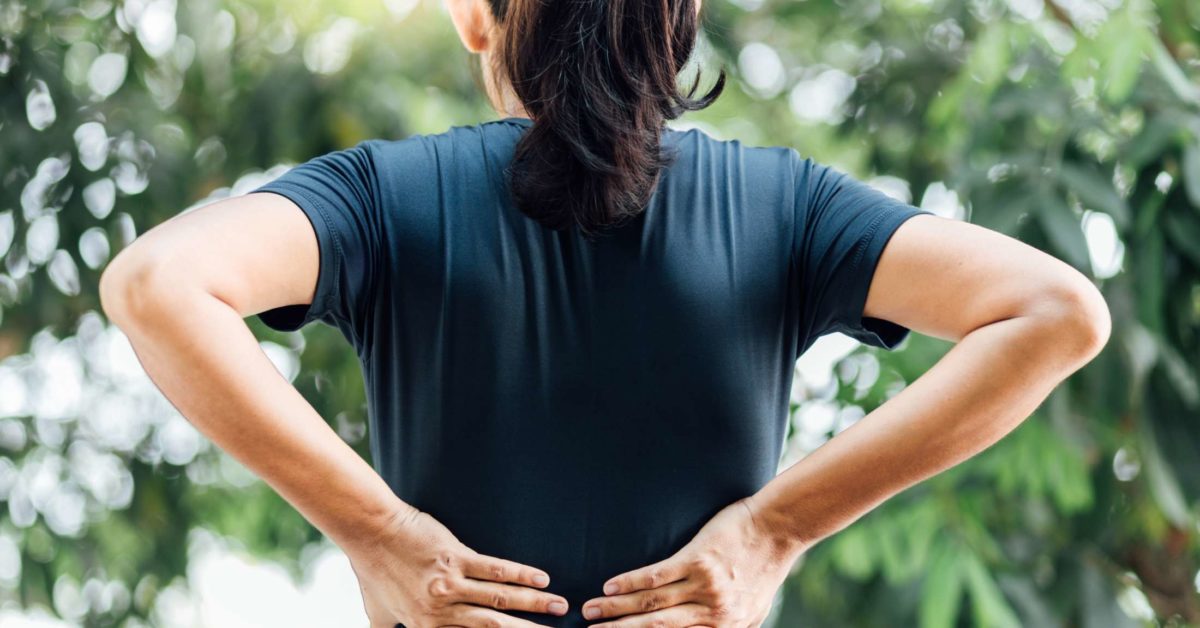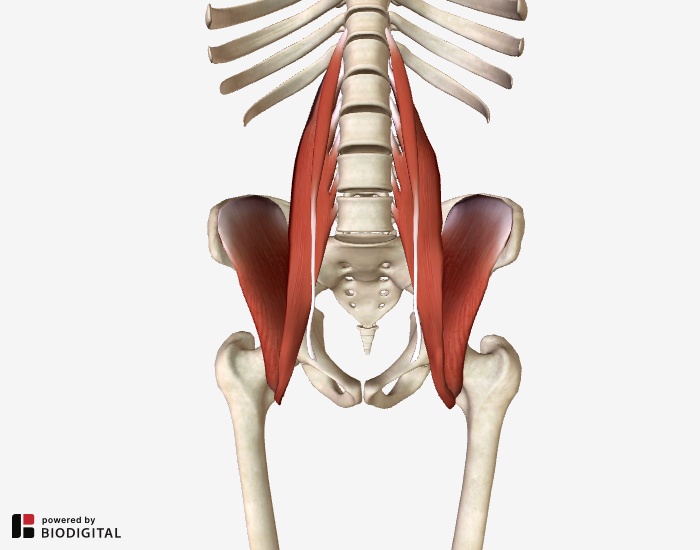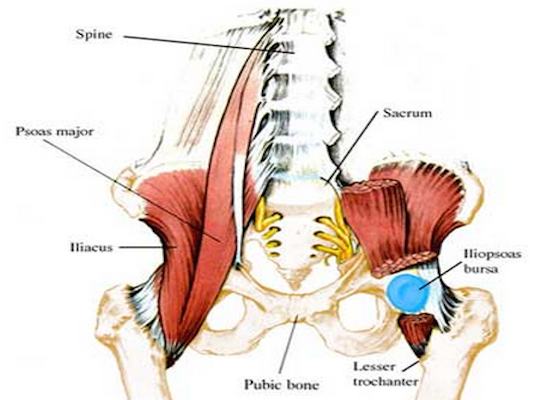Muscles Of The Back And Hip / Am I Having Back Or Hip Pain

The number of problems caused by the psoas is quite astonishing. Our deepest hip flexor, the psoas, is directly connected to our lumbar spine. Common conditions that cause this type of pain are discussed below. The superficial group, the deep group, and the intermediate group. The quick answer to this question is the muscles of the lower back are the multifidus, longissimus, spinalis, and quadratus lumborum.
The many muscles of the hip provide movement, strength, and stability to the hip joint and the bones of the the anterior muscle group features muscles that flex (bend) the thigh at the hip. Back problems can masquerade as hip problems. Most pain from hip and back problems is due to ordinary wear and tear on the body. When these muscles get tight, as they often do, you may find that along with hip pain, your lower back hurts—but you can't figure out why. The pectineus, the adductors longus, brevis, and magnus, as well as the tensor.
Our deepest hip flexor, the psoas, is directly connected to our lumbar spine.
Sharp pain in the lower back and hip on one side a shooting and sharp pain felt on one side on your lower back and hip may be caused by muscle spasm, joint dysfunction, and/or nerve compression in the region. Muscle anatomy buttocks 12 photos of the muscle anatomy buttocks muscle anatomy buttocks, muscle anatomy of lower back and buttocks, muscle anatomy of the buttocks, muscle anatomy of the hips & buttocks, muscular anatomy of the buttocks, human muscles, muscle anatomy buttocks, muscle anatomy of lower back. The number of problems caused by the psoas is quite astonishing. The posterior muscle group is made up of the muscles that extend (straighten) the thigh at the hip. Muscles found in the superficial group include rhomboid major, rhomboid minor, levator scapulae, trapezius, latissimus dorsi. So if our hip flexors get tight, they will begin to tug uncomfortably at the lower spine, thus causing stiffness and achiness in the lower back and uncomfortable hip pain. Biceps femoris is one of the three muscles which form the hamstring group forming the back of the thigh. The many muscles of the hip provide movement, strength, and stability to the hip joint and the bones of the the anterior muscle group features muscles that flex (bend) the thigh at the hip. Is radiating lower back and hip pain dangerous? Other muscles are small and cover much less space. There are three different muscle groups found in the back: Lower back muscle and hip pain may also be caused by stenosis in the spine. Hip muscles which make up the adductors Major muscles that support the back and hip, such as the quadratus lumborum, psoas, and piriformis, play a role in maintaining the stability and function of the sacroiliac joint.
The muscles of the back are a group of strong, paired muscles that lie on the posterior aspect of the trunk they provide movements of the spine, stability to the trunk, as well as the coordination between the movements of the limbs and the back muscles are divided into two large groups: The lower the seat of the chair, the greater the flexion. Muscles located at the side of the hip, which include the gluteus medius, piriformis, and hip external rotator muscles contribute greatly to the well being of your lower back, as well as your posture. Hip flexion is maximal with a high, forward kick that brings the leg above the level of the waist. Many muscles contribute to these movements:

Major muscles that support the back and hip, such as the quadratus lumborum, psoas, and piriformis, play a role in maintaining the stability and function of the sacroiliac joint.
There is a lot of overlap, says hip specialist trevor murray, md. Hamstring and glute exercises, such as glute bridges, squats and hamstring curls, to balance out your tight hip flexors. Is radiating lower back and hip pain dangerous? The hip flexors are muscles that connect the lower back to the hips, groin, and thigh bone. Our deepest hip flexor, the psoas, is directly connected to our lumbar spine. Some of these muscles are quite large and cover broad areas. These muscles, including the gluteus maximus and the hamstrings, extend the thigh at the hip in support of the body's weight and propulsion. More commonly, our hips flex to a 90° angle when we sit in a chair; Low back pain, sacroiliac pain, sciatica, disc problems, scoliosis, hip degeneration, knee pain, menstruation pain, infertility, and digestive problems, neck pain and disc problems,. In this article, we'll discuss five causes of lower back and hip. The biggest factor in back and hip pain is the psoas muscle.
There is a lot of overlap, says hip specialist trevor murray, md. The hip flexors are muscles that extend from the hips to the knees. If these muscles are stiff and tight, often due to remaining. Our deepest hip flexor, the psoas, is directly connected to our lumbar spine. Is radiating lower back and hip pain dangerous? Attached to the pelvis are muscles of the buttocks, the lower back, and the thighs. They are responsible for the range of motion in the legs and hips.

Related posts of muscles of the lower back and hip diagram muscle anatomy posterior.
The hip flexors are muscles that connect the lower back to the hips, groin, and thigh bone. Suffering from a sore neck, back and shoulders? If these muscles are stiff and tight, often due to remaining. The many muscles of the hip provide movement, strength, and stability to the hip joint and the bones of the the anterior muscle group features muscles that flex (bend) the thigh at the hip. They are responsible for the range of motion in the legs and hips. Get our mobility guide to ease pain and soreness. Key muscles of the hip : Tight hip flexors can lead to a limited range of motion, poor posture, lower back, and hip pain, and even injuries. Some of these muscles are quite large and cover broad areas. Low back pain, sacroiliac pain, sciatica, disc problems, scoliosis, hip degeneration, knee pain, menstruation pain, infertility, and digestive problems, neck pain and disc problems,. (2017, elsevier) should be consulted. Related posts of muscles of the lower back and hip diagram muscle anatomy posterior. Other muscles are small and cover much less space.

Back pain can easily be mistaken for or accompanied by hip pain and discomfort.

Lower back muscle and hip pain may also be caused by stenosis in the spine.

Myofascial trigger points in muscles such as the quadratus lumborum, gluteals, piriformis, deep hip rotators, and iliopsoas can produce significant lower back and hip pain.

The psoas is the primary hip flexor, assisted by the iliacus.
Sharp pain in the lower back and hip on one side a shooting and sharp pain felt on one side on your lower back and hip may be caused by muscle spasm, joint dysfunction, and/or nerve compression in the region.

There are three different muscle groups found in the back:

Lower back muscle and hip pain may also be caused by stenosis in the spine.

In this article, we'll discuss five causes of lower back and hip.

Attached to the pelvis are muscles of the buttocks, the lower back, and the thighs.

The hip flexors are muscles that connect the lower back to the hips, groin, and thigh bone.

Common conditions that cause this type of pain are discussed below.

Major muscles that support the back and hip, such as the quadratus lumborum, psoas, and piriformis, play a role in maintaining the stability and function of the sacroiliac joint.

The superficial group, the deep group, and the intermediate group.

Walking also requires hip flexion.

The psoas is the primary hip flexor, assisted by the iliacus.

The pectineus, the adductors longus, brevis, and magnus, as well as the tensor.

The extrinsic back muscles, which lie most superficially on the back.

The psoas is the primary hip flexor, assisted by the iliacus.

Other muscles are small and cover much less space.

Attached to the pelvis are muscles of the buttocks, the lower back, and the thighs.

The lower the seat of the chair, the greater the flexion.

There are three different muscle groups found in the back:

The muscles of the back are a group of strong, paired muscles that lie on the posterior aspect of the trunk they provide movements of the spine, stability to the trunk, as well as the coordination between the movements of the limbs and the back muscles are divided into two large groups:

Hip abduction occurs when the femur moves outward to the side, as in taking the thighs apart.

Hamstring and glute exercises, such as glute bridges, squats and hamstring curls, to balance out your tight hip flexors.

The back's muscles start at the top of the back (named the cervical vertebrae) and go to the tailbone (also named the coccyx).

Get our mobility guide to ease pain and soreness.

Biceps femoris is one of the three muscles which form the hamstring group forming the back of the thigh.
Walking also requires hip flexion.

Similar to learning the muscles of the lumbar spine/trunk, it can be helpful to first look at the.
:background_color(FFFFFF):format(jpeg)/images/article/en/hip-and-thigh-muscles/hb4Hk0VRlnW13SxvZgJiA_Hip_muscles2.png)
The posterior muscle group is made up of the muscles that extend (straighten) the thigh at the hip.

The muscles you probably know the best are your glutes (gluteal muscles), the large, strong muscles that attach to the back of your hip bones and comprise the buttocks.

Hip adduction occurs when the femur moves back to the midline.
Posting Komentar untuk "Muscles Of The Back And Hip / Am I Having Back Or Hip Pain"